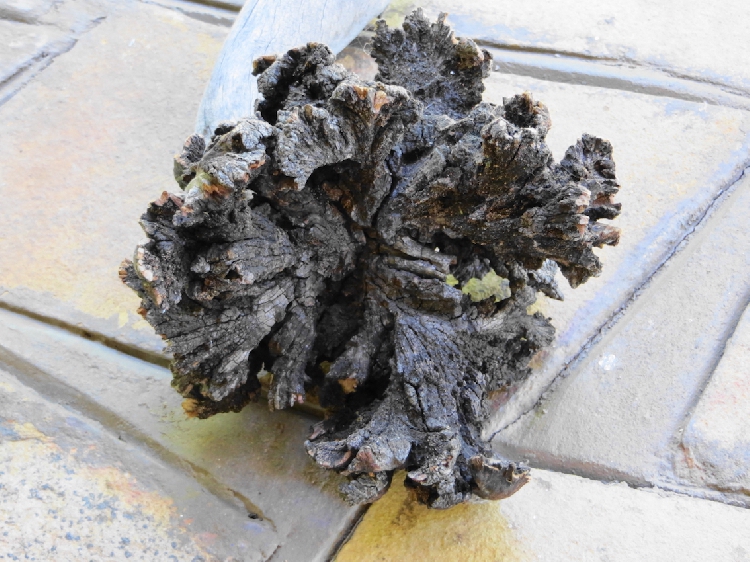• Luise HoffmannTHIS is a hemi-parasite often found on various tree species in Namibia.
It is conspicuous not only because of its red flowers but also because the tree seems to have two very different kinds of leaves as can be seen on the photo by Coleen Mannheimer, which shows the fairly large, waxy olive green leaves of the mistletoe and the small roundish leaflets of the black-thorn acacia (Acacia mellifera subsp. detinens)
Names: G. Streichholzmistel; A. voëlent; H. otjiraura; Ky. oshilunda; N-D. mâ!khuis, mâias. ‘Lighted candles’ and the German name ‘matchstick mistletoe’ refer to the shape of the flowers. The Afrikaans name ‘voëlent’ or ‘bird-graft’, refers to the extremely sticky seeds, which attach themselves to the beaks or feet of birds and are thus spread from one tree to the next.
The Otjiherero word ‘raura’ means ‘to come down’ and describes the way in which the branches of this plant hang down from the branches of their host. The botanical name Tapinanthus is made up of the Greek words ‘tapeinos’ = ‘humble, base’ and ‘anthos’ = ‘flower’, while ‘oleifolius’ refers to the colour of the leaves resembling that of olive leaves.
This mistletoe occurs all over Namibia wherever its host trees thrive. It is called a hemi- or half-parasite because in contrast to true parasites, which live entirely off their host, it has green leaves, which use the energy provided by the sun to produce food from carbon dioxide and water.
This shrubby, much branched plant develops from the sticky seed, which attaches itself to the bark of a tree and immediately sends down roots into the tissue of the branch to suck water and nutrients. Green branches of up to one metre or more grow from a swollen base developing from the point of contact of the seed. They have tough waxy blue-green, leathery leaves and eventually produce tubular red to pinkish red flowers with whitish spots.
The flower buds have a globe shaped green or white tip giving them the appearance of matchsticks. When ripe they turn a dark purple colour. Upon the slightest touch by an insect or the beak of a nectar bird they burst open, split into five recurved lobes and shoot out a puff of pollen, which settles on the insect or bird who then carry it on to pollinate other mistletoe flowers.
The pollinated flowers develop into bright red oval fruit containing the very sticky red seeds mentioned above. Barbets and starlings regurgitate the seeds immediately, bulbuls, mousebirds and thrushes excrete the seeds promptly. As the seeds germinate immediately upon coming to rest on a branch, this may lead to a massive infestation with these parasites.
So in a garden it is best to remove this mistletoe as soon as possible by cutting or sawing off the branch between the point of contact and the tree trunk. On dead trees one sometimes finds thickened structures shaped like a rose. This is where a mistletoe plant attached itself to the branch. When dead, the parasite separates neatly from the host leaving these strange structures known as ‘wood roses’. One finds them sometimes in souvenir shops or as decorations in lodges and guest farms.
The mistletoe is sometimes fed to goats and giraffe have been observed eating them.
Stay informed with The Namibian – your source for credible journalism. Get in-depth reporting and opinions for
only N$85 a month. Invest in journalism, invest in democracy –
Subscribe Now!






